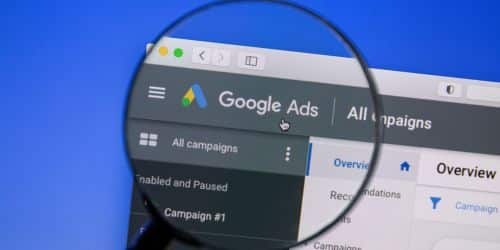Google Ads is a vital tool in digital marketing, helping businesses of all sizes increase their online presence and sales. To truly benefit from it, it’s important to strategically use the platform to get the best return on investment.
That means understanding Google Ads deeply, targeting the right audience, and creating ads that convert viewers into customers. Mastering Google Ads is crucial for small business owners looking to optimize their ad spend and marketing professionals seeking to improve campaign results, greatly influencing business success.
Read on to discover actionable strategies that will help you boost your Google Ads ROI.

- Keyword Research And Selection
Selecting the right keywords is central to the success of any Google Ads campaign. This process is all about understanding what potential customers are searching for and ensuring that your ads align with these queries.
Here are some key strategies to enhance your keyword research and selection:
- Utilize Google’s keyword planner: This tool helps identify keywords relevant to your business with a high search volume. It also provides insights into the competition level and potential cost of these keywords, aiding in making informed decisions.
- Prioritize high-intent keywords: Keywords that suggest a readiness to purchase or engage are more likely to convert. For instance, someone searching for ‘buy window frames online’ shows a clearer intent to purchase than searching for ‘window frames.’
- Regularly update your keyword list: The digital landscape and search trends constantly evolve. Regularly adding new keywords and removing those that underperform ensures that your campaigns stay relevant and effective.
Thorough and strategic keyword research and selection are foundational to the success of Google Ads campaigns. It’s a continuous process that requires regular refinement. A skilled Google Ads Consultant understands this dynamic and utilizes these strategies to keep campaigns on the cutting edge, ensuring that ads reach the right audience and drive meaningful engagement and conversions.
- Crafting Compelling Ad Copy
Creating engaging and persuasive ad copy is critical to the success of Google Ads campaigns. Your ad copy serves as the primary means of communication with potential customers, and its effectiveness can significantly influence click-through rates and conversion rates. Crafting ad copy that resonates with your target audience can set the tone for the entire customer journey.
Below are some strategies for developing compelling ad copy:
- Highlight unique selling points: Focus on what makes your product or service unique. This could be anything from an exclusive feature, a special offer, or a unique benefit your product or service provides. For example, if your product is eco-friendly, emphasize how it helps the environment, setting it apart from competitors.
- Incorporate a strong call-to-action (CTA): Your CTA should be clear and concise, prompting the reader to take immediate action. Whether it’s ‘Shop Now,’ ‘Learn More,’ or ‘Get a Free Quote,’ the CTA should be action-oriented and create a sense of urgency.
- Experiment with different ad copies: Testing various versions of your ad copy helps you understand what resonates best with your audience. Try different headlines, descriptions, and CTAs. Monitor which variations perform the best in engagement and conversion, and use these insights to refine your approach.
Crafting compelling ad copy involves understanding and appealing to your audience’s needs and desires. It’s a combination of highlighting what sets your offering apart, urging immediate action through a strong CTA, and continuously refining your approach based on performance data.
- Optimizing Landing Pages
The effectiveness of your Google Ads campaigns relies heavily on the quality of your landing pages. A well-optimized landing page can significantly enhance the user experience and increase conversion rates.
For effective landing page optimization, consider the following strategies:
- Ensure message consistency: The content and tone of your landing page should seamlessly align with your ad copy. If your ad promises a specific deal or highlights a particular aspect of your product, your landing page must deliver on that promise without deviation. This consistency builds trust and keeps the user engaged.
- Optimize for conversion: Your landing page should be designed with the primary goal of converting visitors. This means including a clear and compelling CTA, reducing distractions, and focusing on the benefits of your product or service. The CTA should stand out and guide the user towards an action, like purchasing, signing up, or downloading a resource.
- Test and improve with A/B testing: Continuous improvement is crucial to landing page optimization. Use A/B testing to experiment with elements like headlines, images, CTA buttons, and layouts. Analyzing the results of these tests will provide valuable insights into what resonates best with your audience and lead to higher conversion rates.
A well-optimized landing page is a critical component in the success of your Google Ads campaigns. It’s about creating a coherent journey from ad to landing page, focusing on conversion optimization, and continually refining your approach based on user feedback and testing results.
- Continuous Monitoring And Adjustment
Maximizing ROI in Google Ads is a dynamic process that requires ongoing attention and refinement. The digital advertising landscape is ever-changing, and staying ahead requires constant monitoring and timely adjustments to your campaigns.
To effectively monitor and adjust your campaigns, consider the following strategies:
- Analyze performance data: Regularly review metrics such as click-through rates, conversion rates, and cost per conversion. This data provides invaluable insights into your campaigns’ performance and highlights improvement areas. For example, if you notice a drop in click-through rates, it might be time to revise your ad copy or targeting criteria.
- Refine bids and budgets: Adjust your bidding strategies and budget allocations based on your campaign performance data. If specific keywords or ad groups perform exceptionally well, consider increasing your bid or allocating more budget to these areas to maximize their potential.
- Test new strategies: The digital marketing environment is constantly evolving, making it essential to stay flexible and open to new approaches. Experiment with different targeting methods, ad formats, and bidding strategies to discover what works best for your audience and goals.
This ongoing refinement process drives a strong ROI and keeps your campaigns at the forefront of digital advertising effectiveness.
Conclusion
Using Google Ads effectively requires more than just making ads. It includes thorough keyword research, writing ad copy that appeals to your audience, optimizing landing pages for conversions, and consistently monitoring and tweaking your strategies. Focusing on these aspects helps your campaigns reach and engage your target audience effectively, leading to significant results. As the digital world changes, being flexible and knowledgeable in your Google Ads approach is crucial for ongoing success and a strong return on investment.






